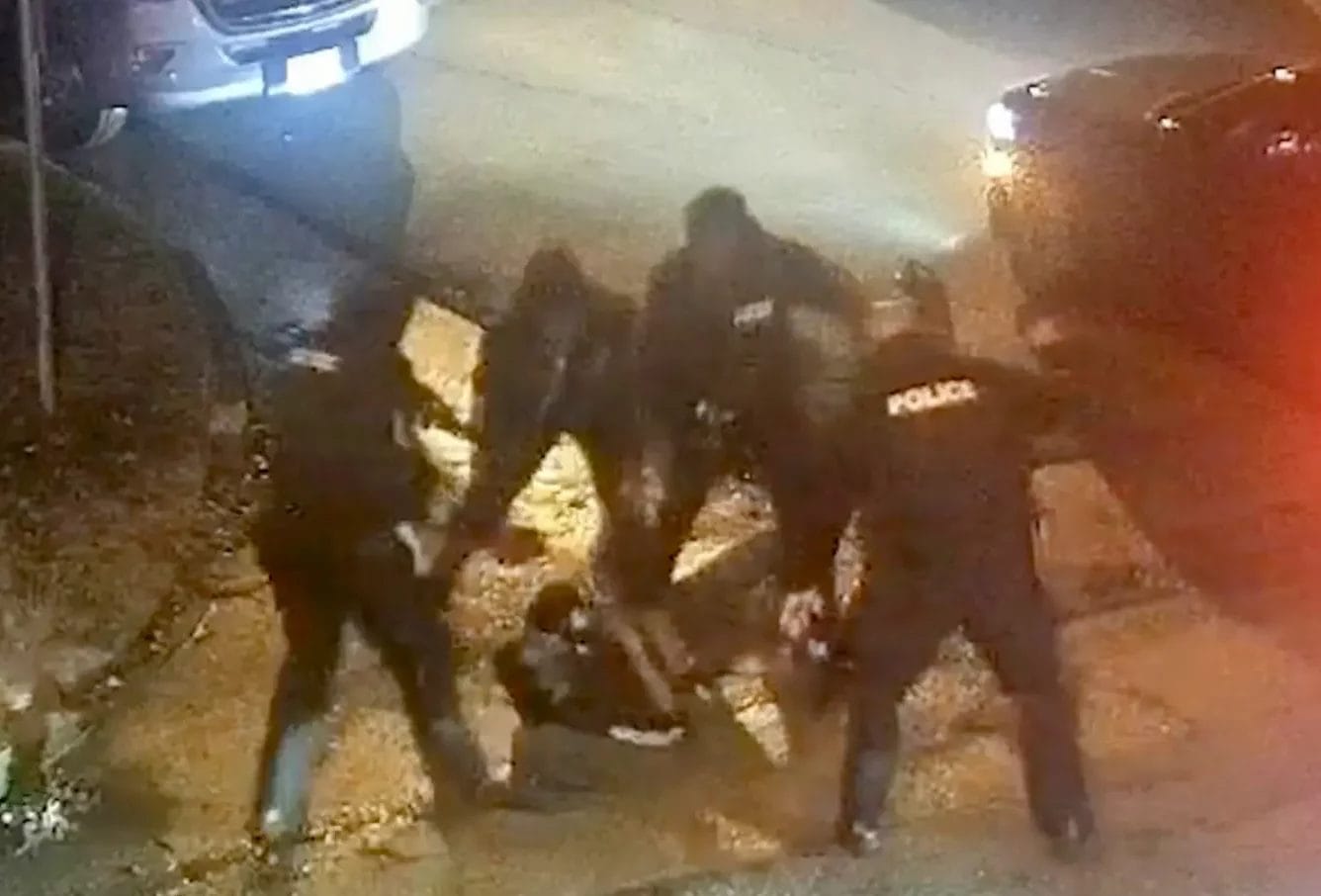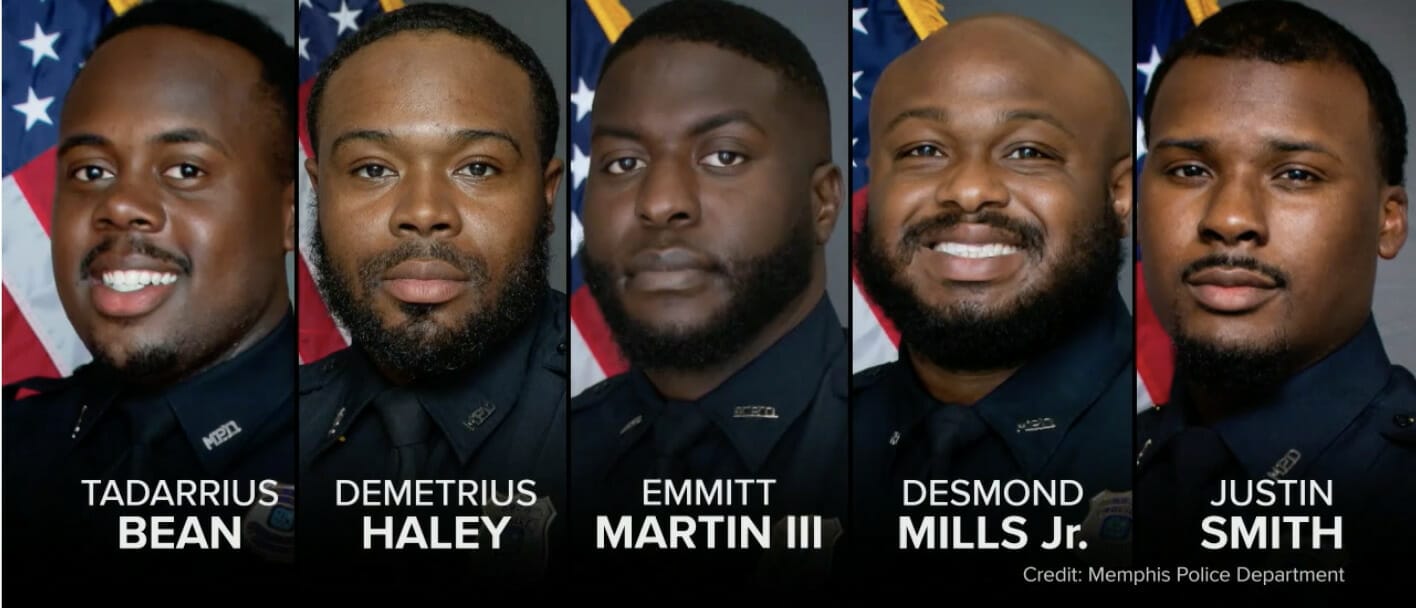THE SERAAJ FILES, by Kevin Seraaj, J.D., M.Div.
On January 7, Tyre Nichols, a 29-year-old unarmed Black man, became the latest in a long line of innocent men brutalized and killed by vicious, out-of-control cops for no reason other than being black. Cop culture. He was pulled over in his car and told — and maybe not told– he was driving recklessly. Dash and body cam video showed that he was summarily pulled from his vehicle and surrounded by no less than 5 intimidating police officers confronting him with increasingly angry voices and physicality. You can hear him cry out in fear and then try to run away, ostensibly to his parents’ home, since he had been pulled over close to where they lived. He didn’t get away.

This scene has been horrifically played out a thousand times in the history of black life in this country. From the times our forefathers were ripped from their homelands and forcibly brought in chains to the dystopian nightmare that was to become our American reality, the blood of our men, women and children have soaked this ground even as our continual cries for justice have shaken the foundations of heaven. The horror of Emmitt Till’s brutal beating was unusual only in that his mother left his casket open for the world to see. It paled in comparison to the madness of the thousands of black men lynched and burned while hanging from trees for nothing more than being black and being alive. The late, great Billie Holiday called those grotesque images “strange fruit.”
Police killing of black men has been an American norm for hundreds of years. Many today can only go back in time as far as Jonny Gammage or Amadou Diallo in recalling police brutality of this sort.
But in December 1979, Arthur McDuffie was one such victim. He died after being beaten by four officers during a traffic stop. They claimed he died when his motorcycle crashed, but the medical examiner concluded that his injuries were not consistent with a motorcycle crash, and were more consistent with being beaten.
In July of 1981, Ernest Lacy was approached by police and questioned in connection with a rape he did not commit. (We know this because another suspect was identified and later convicted of that crime.) But when police questioned Lacy, they handcuffed him and threw him to the ground. One officer then– in what must be a police handbook detaining technique– pushed his knee into Lacy’s back and neck. Lacy became unconscious and died there at the scene. Sound familiar?
Police say traffic stops are one of the most dangerous situations they encounter on the job, so despite being armed and cloaked with the power of governmental authority, nearly all of them are immediately “in fear for their lives”– a magical phrase that has for years justified without more any and everything cops do. Imagine how much more dangerous– and fearful– it is for people like Tyre Nichols, who are most likely to die as a result of a traffic stop.
Nelson Mandela said “to be free is not merely to cast off one’s chains, but to live in a way that respects and enhances the freedom of others,” but I believe he missed the most integral point. For blacks in America, to be free is not merely to be without chains, but to be respected in that freedom– the one thing blacks in America are still largely denied to this day.

Some immediately expressed amazement that black cops could have been the perpetrators of this crime– given all the attention focused on police brutality over the past few years. But reality negates the very suggestion of surprise. I’m sure that in the worst moments of his savage beating, all Tyre saw was blue. This is cop culture. American culture. And American culture, by and large, has historically been “anti-black.”

It has always been true in America that not all whites subscribed to the oppression of enslaved– or free– blacks. But most acquiesced to the indignities and brutality heaped upon blacks for fear or being branded a “n** **r lover, and perhaps even killed themselves. Hate has thoroughly permeated every crack and crevice of American society and it overwhelmingly targeted blacks. We owe a debt of gratitude to those whites who participated in the Underground Railroad; to the anti-slavery abolitionists like John Brown and his sons who put their lives on the line to see slaves in America freed; and to the great many whites who died on the Civil War battlefield to prevent the spread of that peculiar institution. And yet racism persists.
Some whites continue to downplay the impact of racism in police interactions with blacks. Activist blacks, they argue, are simply alarmists with political agendas. This case proves the point, they say, because these cops were black– meaning racism could not possibly be involved. This, however, is typical right-wing denial of the systemic nature of racism. Consider this: if a slave-owner forced one slave to beat or whip another slave, could it be sanely argued that because the hand holding the whip was black no racism was involved? When the system mandates or suggestively permits killing of unarmed black men, it makes no difference the color of the officer doing the killing. The “system” is represented by the blue uniform and as we saw in the George Floyd killing, even Asian cops will act like Klansmen when dressed in officer blue.
To change cop behavior, we must change cop culture– and it starts at the top.
The late Dr. Martin Luther King said: “It may be true that the law cannot make a man love me, but it can stop him from lynching me, and I think that’s pretty important.”
Me, too. And to stop cops from killing unarmed people, more frequent prosecutions for violating existing law are necessary. Recent jury verdicts finding cops guilty are a clear indication that the general public is a little more willing these days to make violent cops pay for their crimes. But as long as bad behavior is tolerated within the departments by captains and chiefs who look the other way, the killing of unarmed innocent men and women (#SandraBland) because of the color of their skin will go on. And on. And on. And on.
Cop culture.




